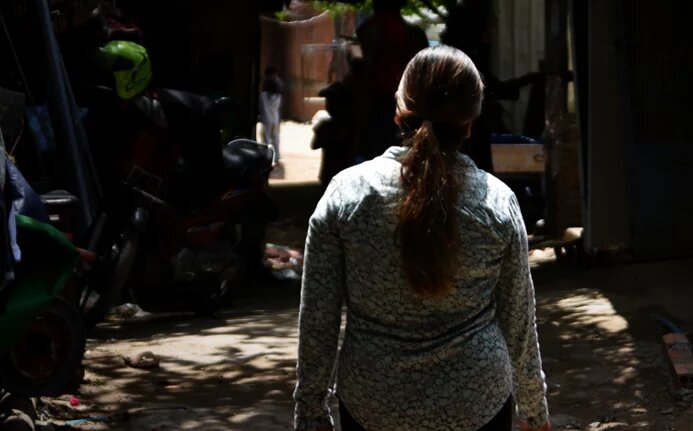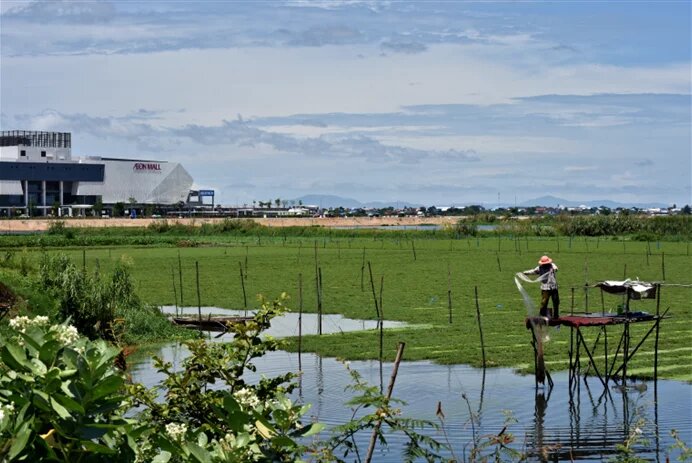

Kruy Phal sits at a small store on a dusty road right next to a massive condominium development in southern Phnom Penh, selling snacks, groceries and bright colored ice cream popsicles. Village residents stop at her store, buy a pink or purple or bean filled popsicle, not far from the boulevard that dissects the fast-disappearing Boeung Tompun lake.
“Now everything is more expensive. With the rising cost of living, we make less income,” she says sitting outside her store.
Not far from Phal’s store, fisherfolk use worn out wooden boats to fish in the last few patches of remaining lake, surrounded by rapid development that has reached the doorsteps of their village but has created no positive impact for them.
Boeng Tompun is one of Phnom Penh’s last major lakes and extends south to Kandal province. The lake is critical for the city: it is a major rainfall catchment area and a critical source of agricultural and fishing activity for local communities. The lake was estimated to serve as a reservoir for 70% of Phnom Penh’s rain water, with urban poor communities using it as a source of fish and vegetables grown on its once-vast waters.
But, that was until a government directive in 2008 allowed for the filling of 70% of the lake for development of a satellite city, according to Sahmakum Teang Tnaut (STT). STT is a frontline Cambodia non-governmental organization that works exclusively with urban poor communities, advocates for their land tenure security and documents implementation of state development directives that directly impact families and their livelihoods.
As the lake was filled in, massive malls, gated housing projects and condominiums started to rise around Phal and the Prek Takong community she lives in. The close to 240 people in the community have been at risk of eviction for over a decade, placing them in the tenuous situation of facing landlessness in what has been their home for years.
As with many promises of development, the benefits are often reaped by a few, leaving vulnerable communities with little. The community, which has always lived by the lake, has no access to the city’s water services, no roads, street lighting, or sewage and drainage systems. Until recently, authorities were unperturbed by Monsoon season flooding in the community and it took STT’s incessant interventions to get local officials to construct a dirt road for easy passage within the village.
Even as Prek Takong faces potential eviction, community members like Phal are strong in their desire to stay in their homes and refuse to leave the area. All she wants are documents confirming ownership of the land she lives on and for the lake — with which they share a symbiotic relationship — to remain a part of their lives and their livelihoods.
“We can’t really do anything about all this development. We fear being seen as living here illegally and getting evicted.”
“Our dream is to have a land title and we don’t want to move from our homes,” Phal says.
This article is an excerpt from "Profiles of Courage." Click here for the full reading.

